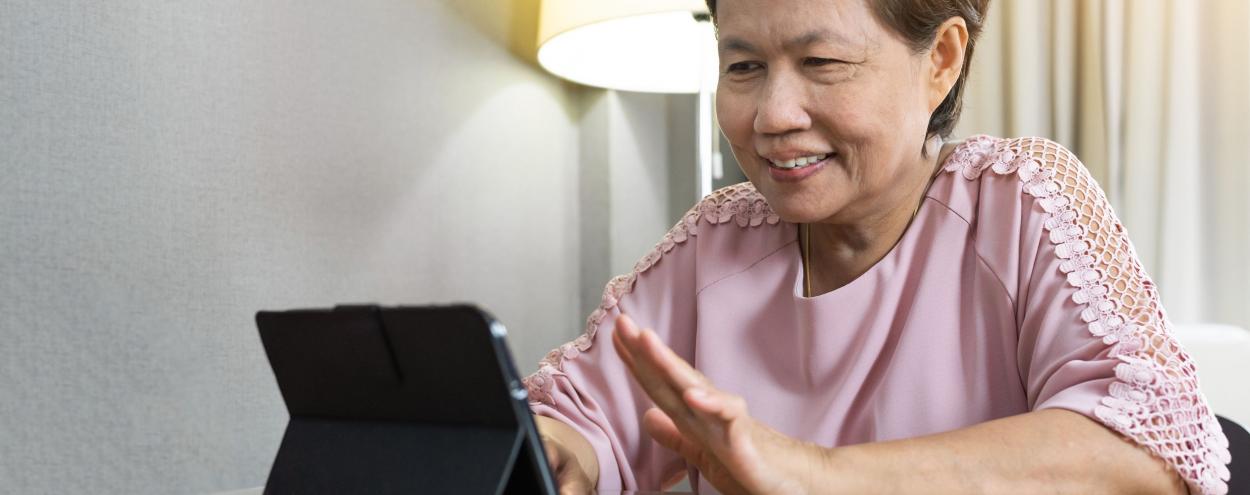
Created by Dr. Kristine Theurer, the Java Music Club (JMC) program helps combat loneliness and depression in long-term care homes by engaging residents in structured sharing groups and supporting each other.
“It's about group identity and power of belonging—if you're not part of a social group, you're vulnerable,” says Clayton MacKay, Founder and CEO of Java Group Programs. “There's a whole psychology behind these programs and why they work so well.”
The evidence-based, peer support program was a roaring success, implemented in over 1,200 communities in Canada and the United States. Then the pandemic hit, and with it, physical distancing regulations that dramatically increased social isolation and loneliness among aging Canadians. The JMC programs were suddenly unable to support their participants….in person, that is.
Going from in-person to online
“We always had the idea to go to digital,” says MacKay. “We wanted to see more content updates for music, make things more culturally relevant for certain populations, and have data collection to help drive the program design.”
“But we never knew how well the program would translate because it's a very emotional program, based on empathy and being open,” he says.
So, they came to George Brown College’s School of Computer Technology to help digitize the experience. Supported by Mitacs/AGE-WELL funding, the research team got to work. That’s when the Java Music Club became JAVAconnects.
Digitizing empathy
“Anyone can build an app that functions. Our challenge was making something that can be used,” says principal investigator Albert Danison. Danison is the Chair of the School of Computer Technology, with decades of experience in technology. “That’s the real push of the research: how can you take something that used to be in person, with no need for data, and translate that into a digital experience?”
The JAVAconnects app needed to be user-friendly, work with a range of comfort levels, and allow for a facilitator. “It’s extremely challenging," says Danison. “You have a limited real estate when it comes to an iPad or tablet screen, and it gets crowded very easily.”
The project was a very collaborative process, which evolved organically based on feedback. “We always want to involve our partners early and often—the team actually built that crucial user interface very quickly and got input from the partners before we even touched the code,” says Danison.
Taking the classroom into the field
Three student researchers from the Computer Analyst program were recruited, something Danison always tries to do in his research. “Whatever they were learning in their coursework, the lessons were reinforced on this project,” says Danison. “When you go on an interview and can point to a technology you helped create, that beats anything on a resume.”
Case in point: one student researcher, Alex, was hired on by the company after graduating to continue his work, followed quickly by a second GBC student, Omar. “The potential audience for this app is large, so we want the platform to be very stable,” says MacKay. “Their work on the app is integral to that.”
The future of JAVAconnects
The app the team developed has a unique split-screen presentation, so facilitators have everything at their fingertips: their materials, permissions, and a step-by-step guide. The participants only see each other in a simple, streamlined interface. Features include the ability to rate songs, user-friendly ways to engage, and live collection of mood-based data.
“COVID-19 has really driven this problem of social isolation in seniors, but it's existed for a long time,” says MacKay. “It’s especially bad for the 15 million seniors living alone in the US and Canada.
Within the app, “the residents take control and start to engage in talking about loneliness, happiness, day-to-day challenges, whatever the topic is today.”
“The team at George Brown has done an excellent job of using technology to hide the technology – presenting a uniquely seamless experience for users,” adds MacKay. “We are very pleased with the result.”
According to MacKay, the app is getting rave reviews, and Java Group has recently started a trial with a large collaborative in Nevada. By going digital, the potential distribution for the product seems boundless.
“We like to say it's not about what we can do for seniors, it's about what they can do for each other,” says MacKay. “That's the key. We just want to be supportive and provide a space for them to connect.”
Related
Faculty research spotlight: Job Talks Access project aims to promote accessible employment
